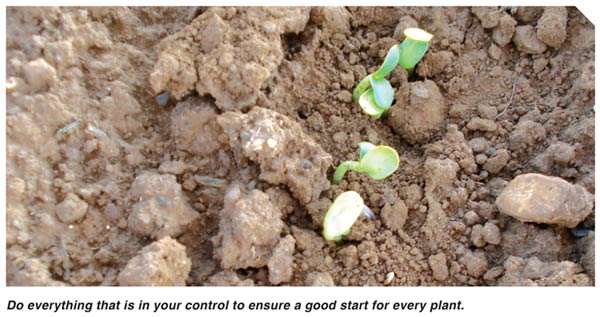Practical aspects of marketing management
May 2016

By the time of reading this article we could either still be experiencing the drought or perhaps experience relief from the drought. Whatever the case, it will not be possible to plant a crop at this stage, except perhaps some vegetables or fodder. So one could ask why an article about marketing management. Regard this article an extension of the previous article regarding when things go wrong in your business.
Those of you who have survived the drought up to the time of reading this article should realize that you will have to adapt your farming business to accommodate drought conditions. Droughts are part and parcel of our farming environment in South Africa.
Use your time on hand to re-think and replan your business including your marketing management. A key aspect of a farm's profitability is to stay on top of marketing trends.
When considering to adapt your farming business as well as possibly considering to produce other products, remember to never, ever produce any quantity of a product before the marketing of the product has not been secured. It is very, very important to be able to market your product when it is ready for marketing.
How to improve marketing management
Let’s attend to some practical hints to improve marketing management.
- If there is uncertainty about the market and you feel to test the market, do it on a small scale.
- As part of a market plan, a market analysis must be done – get information from consumers regarding their possible expectations for a specific product. In South Africa better-off consumers shop at big retailers while poorer people buy from the informal ‘convenience’ outlets of hawkers and spaza shops because of different needs.
- Gather as much information as possible regarding the marketing of the products you are considering. (Read, attend farmer days, visit other producers, etc).
- Visit marketing venues such as a silo, cattle sales, fresh produce markets, abattoirs, and so on. It is important to be familiar with the functioning of these marketing channels.
- Be very careful to chop and change a market plan in an effort to obtain the highest price. Rather be satisfied with a good average, but stable price.
- If possible try and diversify the marketing of a specific product via two or more channels.
- If production costs are known it is far easier to decide on a minimum price for a product. It is actually an absolute requirement to determine your production costs and calculate the break-even point regarding price.
- Control the marketing of your products by keeping proper records of products harvested and sold.
- Look for, investigate and exploit niche markets – a small specialised market for a specific product can be very lucrative.
- Lastly, compile a market plan which should then be part and parcel of the production management program for the particular enterprise.
The market plan must contain a description of the way or ways you are going to market each product as well as when and where and possible quantities and expected price. Bear in mind that products can be marketed in different ways. Such as:
- Out-of-hand sales including variations such as selling form the road side, selling in town or selling at a ‘boeremark’.
- Auctions also known as sales. Products such as vegetables, fruit, flowers and cattle can be marketed per sale/auction. Most of us will be aware of fresh produce markets in the bigger centres. Contracts – a contract being an agreement between a seller and a buyer for a specific product of a specific quality and quantity traded at a specific price.
- Hedging and option contracts. This is a very specialised form of marketing certain products and requires a thorough knowledge of the system.
- Value adding implicates that something is done to the basis product to add utility for the consumer to it, such as packing in smaller quantities, to peal vegetables and pack it, to produce chutney, maize meal, yoghurt, and so forth.
- Exporting – today the exporting of agricultural products is at the order of the day. The major challenge of export markets are quantity, quality and reliable, constant delivery.
- For the grain farmer, other alternatives are available such as to sell your product directly to your nearest silo on a daily basis, as you harvest at a price determined per day – the so-called ‘spot market’.
The latest tendency of marketing of farm products is that producers, whether as a single person or as a group, are becoming more and more involved in value adding to products and/ or the exporting of products.
Should you wish to make a success of the marketing of your product/s – regardless of quantity – you have to produce a quality product, pack it properly, deliver it on time and adhere to any other arrangements regarding the marketing.
Article submitted by Marius Greyling, Pula Imvula contributor
For more information, send an email to mariusg@mcgacc.co.za.
Publication: May 2016
Section: Pula/Imvula